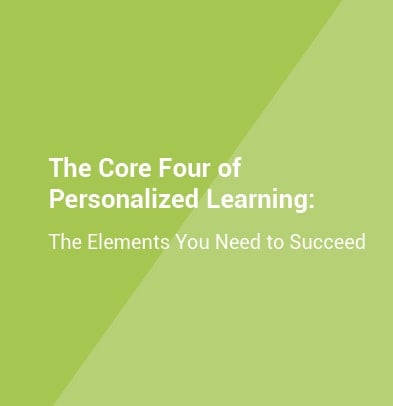Education Elements Newsroom
This article is part of the guide The Personalized Learning Toolkit. The consulting firm Education Elements designated four factors as the keys to successfully integrating a personalized learning model, based on its experience with 100 districts, 300 schools and 300,000 students. Those four elements—flexible content and tools, targeted instruction, data-driven decisions and student reflection and ownership—are the Core Four of Personalized Learning. A framework built around the Core Four provides schools with definitions, details and direction, including actionable ideas, tips and insights from districts who have successfully implemented the four elements.
Share
District Partners in the News | Education Elements | Press Release
SAN CARLOS, Calif., Oct. 24, 2017 /PRNewswire/ -- With much excitement, Education Elements, a recognized national leader in the design and implementation of personalized learning, today announced the five winners of their first Personalized Learning (PL) Challenge. Districts in Utah, Illinois, Arizona, and Missouri were each selected by Education Elements' team of judges, and will be awarded personalized support from Education Elements.
Share

This white paper includes a framework, actionable ideas and insights from districts who have successfully implemented personalized learning, to help you get started.
If you were looking for another reason to support ballot question 3A, Greeley Evans School District 6's upcoming ask for a mill levy override, we want to talk to you about blended learning. And if you weren't looking for any reason to support 3A, you really need to hear this.
Share
Ed Elements in the News | Education Elements
Separate from its Playbook that helps define a vision, Education Elements, a consulting firm, helps schools and districts design next-generation teaching and learning models.
Share
The Greeley-Evans School District 6 Board of Education heard the results of a study of the district's blended learning initiative at its meeting Monday night, showing some of the clearest data yet of the initiative's effectiveness.
Share
District Partners in the News | Education Elements | Mentions
Call them millennials, call them digital natives, call them zombies, but the cliche is that today’s kids can be identified by their hunched posture, their eyes locked on a screen and their tendency to communicate in emoji. However, this idea that schoolkids are perpetually plugged in isn’t exactly true—especially not among kids from poorer families. In the USA, one third of schoolchildren (kindergarten through high school) can’t go online at home, and most of these children are from low-income and rural areas. A decade ago, Larry Irving of the National Telecommunications and Information Administration (NTIA) called this digital divide a “racial ravine,” and his language still rings true today....
Share